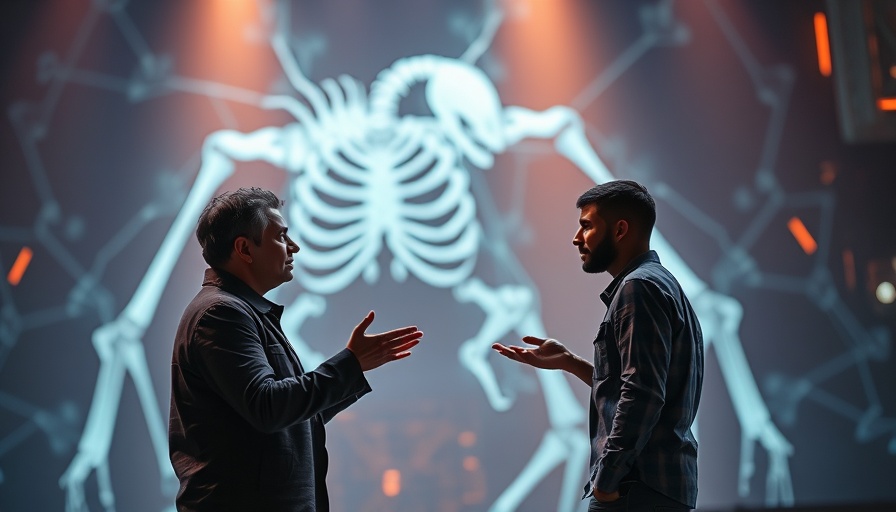
The Merging of Technology and Nature: The Return of the Dire Wolf
Imagine a creature not seen by human eyes for over ten millennia. Thanks to advancements in biotechnology, this imagination may soon become reality. Dallas-based startup Colossal Biosciences is spearheading an ambitious project: bringing the dire wolf back to life through genetic engineering. Their latest announcement reveals plans to release recordings of these creatures’ howls, a sound that has been lost since the Pleistocene Epoch, potentially reawakening the iconic beast in a way that resonates with both scientific exploration and popular culture.
Why Dire Wolves?
The dire wolf, made famous by HBO’s Game of Thrones, is a captivating symbol of an ancient era. The species roamed parts of North and South America, and its extinction after the last Ice Age left a notable void in the ecosystem. In a world where biodiversity is declining, the idea of resurrecting the dire wolf prompts curiosity about the implications of such a move. By using DNA extracted from ancient fossils combined with technologies like CRISPR gene editing, Colossal aims to recreate an animal that showcases both the fascination of folklore and the promise of modern science.
The Science of De-Extinction: A Step Forward in Genetic Engineering
Colossal has successfully birthed three wolf pups that exhibit dire-wolf DNA characteristics, a feat not without its controversies. Critics argue whether these creatures are genuinely ‘de-extinct’ or merely genetically modified gray wolves. Ben Lamm, co-founder of Colossal, asserts the company’s commitment to transparency about their methods, emphasizing their research as a means to educate rather than persuade. As Lamm points out, the scientific community is divided, with some viewing this as an advancement in conservation efforts, while others see ethical dilemmas arising from playing God with nature.
Decoding the Dire Wolf's Howl: What Can We Expect?
Set to unveil shortly, the dire wolves' howls promise to be distinct due to their physical attributes—larger heads and thicker necks may influence acoustics. The startup has employed bioacoustic monitoring techniques to analyze and compare the sounds of these wolves in growth to those of modern canines. As Lamm explains, while to the average observer many wolf sounds seem similar, the science reveals intricate differences. This technology not only enhances our understanding of wolf behavior but also broadens the conversation around wildlife conservation.
The Future of Bioacoustics and Wildlife Conservation
Colossal’s efforts extend beyond mere entertainment; they are part of a broader mission through the Colossal Foundation, focusing on conservation and technological innovations. Using AI and machine learning not only to study dire wolves but also to enhance the monitoring of existing species underscores the adaptability of this technology. Their research reflects an important trend: conservation efforts are increasingly intertwined with technological advancements. This synergy could redefine how we approach wildlife management.
Cultural Implications: Dire Wolves in Popular Imagination
As we prepare to hear these majestic sounds from a creature long thought extinct, we also tap into a cultural phenomenon. The collaboration between Colossal and Sophie Turner, known for her role as Sansa Stark, intertwines modern science with entertainment, further fueling public interest in both the dire wolf and genetic research. This intersection of culture and science sparks important discussions on the ethics and future of de-extinction.
Common Misconceptions About De-Extinction
Despite the excitement, misunderstandings abound regarding de-extinction. Many equate bringing a species back with restoring it to its original ecosystem, ignoring the complex factors that lead to extinction. Additionally, some believe that recreating a species can fix biodiversity loss, but this overlooks the importance of conservation efforts for existing species. The reality is complex: resurrected species may struggle if their former habitats or ecological balances aren't restored.
Looking Forward: What Lies Ahead?
As Colossal prepares to present the howls of a creature that roamed the earth thousands of years ago, questions surface about the implications for conservation, ethics, and scientific integrity. Will we embrace genetic engineering as a tool for protection, or will we tread carefully, wary of unpredictable consequences? Whatever the outcome, this exploration into the past is also a lens through which to view our future responsibilities to the animal kingdom.
In summary, the effort to bring back the dire wolf encapsulates a delicate balance between innovation and ethical practice in biology. As we learn more about the ancient past and engage with it through advanced technology, we must also consider the implications of our endeavors on the future of conservation.
 Add Row
Add Row  Add
Add 




Write A Comment